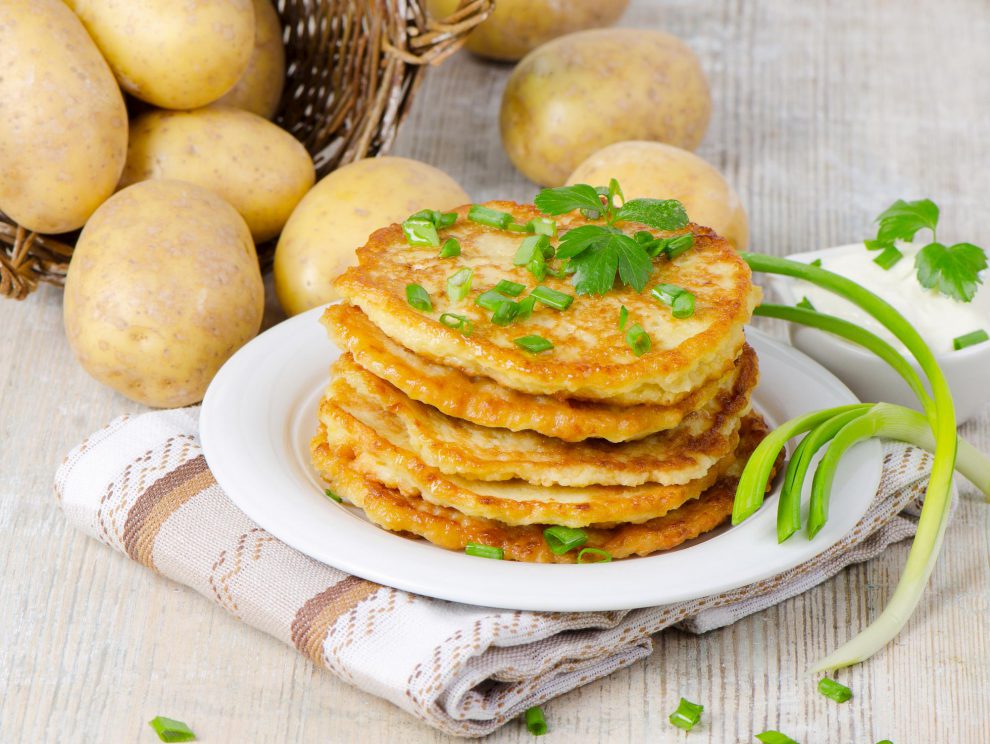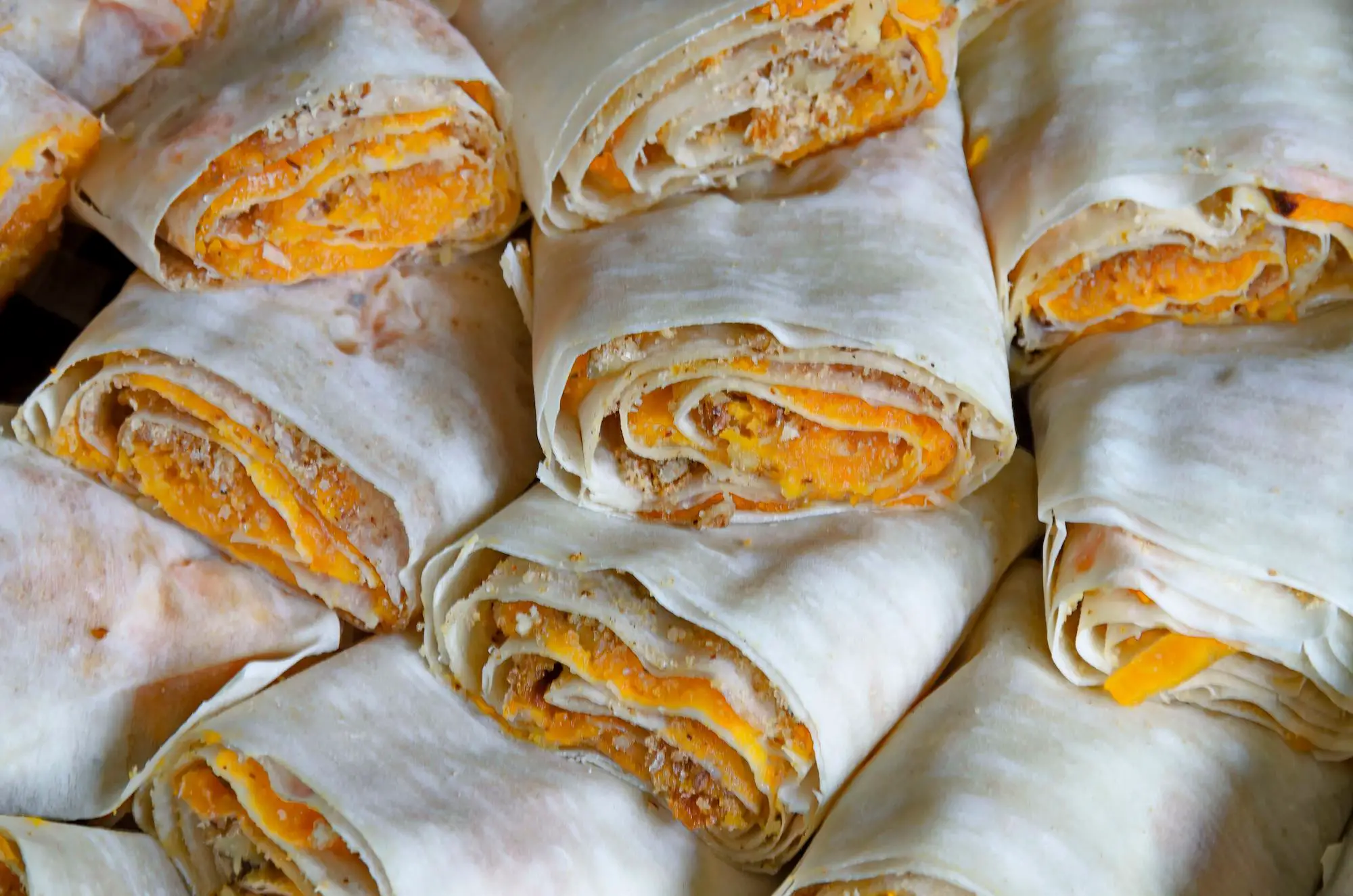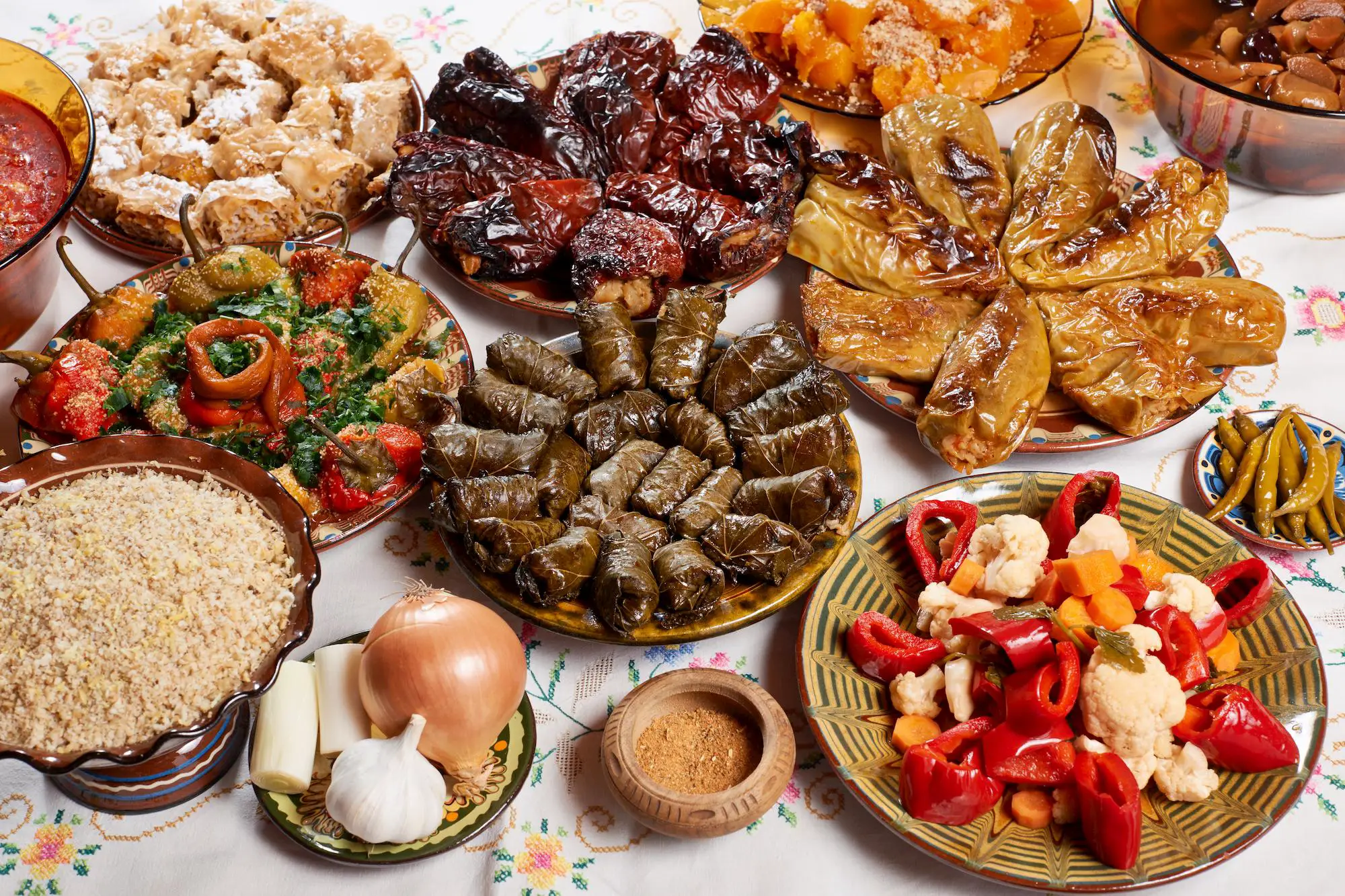The Czech Republic is situated in Central Europe, and it is characterized by a hilly landscape and dominantly temperate continental climate.
The Czech state was initially formed as the Duchy of Bohemia at the end of the 9th century, under the Great Moravian Empire. When the Great Moravian Empire disintegrated, the Bohemian Kingdom emerged.
Fast forward, the Great Moravian realm subordinated to the Holy Roman Empire and later to Hungary, which consequently brought changes not only in the political but also in the social life of its communities, and this nonetheless reflected in the gastronomy of today’s nation.
Different nations in history left their mark in what is today known as the traditional Czech cuisine”. Therefore, one of the oldest food ingredients used by the Czech today is lentils, millet, cumin, cinnamon, and ginger once brought by the Arab merchants in Europe.
Hungarians brought goulash while the Habsburgs introduced small pastries known as halusky.
Potato dumplings topped with sauce, meat preparations, cheese, garlic, and, of course, beer are the most common features in the Czech cuisine.
For all food lovers and those who enjoy or imagine getting lost in the magical, centuries-old Bohemian allies of Prague, here’s a list of 20 popular traditional Czech foods to try:
Table of Contents
1. Knedliky
The famous traditional dumplings that you can find in every Czech restaurant or even frozen in the supermarkets.
The dough of these dumplings is soft and made of flour, potato, and eggs though there are vegan or quark cheese versions as well.
The filing inside the knedliky can vary depending on the savory or sweet variant. When eaten as a dessert, these potato dumplings are filled with fruit jam or whole fruit chunks while savory variants include cheese or meat, preferably pork.
Knedliky are served with melted butter on top and sprinkled with either bread/ cheese crumbs, poppy seeds, or cinnamon sugar [1].
2. Bramboraky
Bramboraky are potato pancakes that are much favored among both Czech ad foreign visitors.
The recipe for this dish is quite simple- grated potatoes, mashed garlic, eggs, some spices such as marjoram, black pepper, and salt. Some versions include chopped bacon or slices of smoked meat. Next, this batter is fried in the shape of small American- like pancakes until golden and crispy.
The texture of the Bramboraky is usually crispy when thin or chewy if they are thick.
This dish is served hot with sauces such as mustard or ketchup on the side.
3. Vepro Knedlo Zelo
This is one of the most popular and regularly recommended traditional Czech dishes. Though its name may seem quite complicated at first glance, it is very descriptive and says- pork roast with bread dumplings and sauerkraut ( or traditionally red cabbage).
In the process of preparation of this traditional Czech food, the meat is roasted with chopped onions while the red cabbage/ sauerkraut is lightly stewed or served plain.
The meat, the dumplings, and the sauerkraut are finally topped with a sauce made of the pork roast juice.
Some chefs add thin-sliced bacon and caraway seeds on top to enhance the flavor of this main dish.
4. Svickova na smetane
This is a Czech meat dish that pops up first when you google “Czech republic foods” or “food in Prague” while strolling down the capital and wondering what to have for lunch today as a newcomer.
Why is that so? Svickoba na smetane is a typical Czech dish, and it means “sirloin with cream”. The Czechs have proudly branded this dish as national since it contains the most commonly used and favorite Czech ingredients- sour cream, beef, bacon, dumplings on the side, and root vegetables.
Though it looks like a plain tenderloin with a generous amount of gravy, Smickova is an indulgent creamy dish with a zest of root vegetables and a delicious beef sirloin with the rich, full body of flavor.
You may commonly find it as a main dish in today’s restaurants and bistros in the Czech Republic, which have even invented a vegan/ vegetarian version. Traditionally, a tablespoon of berry jam on the side is the preferred companion of Smickova.
Related post: The Most Popular Croatian Foods
5. Krupicova kashe
A tasty semolina milk pudding cooked with a light amount of sugar.
This Czech food is traditionally served and eaten plain or with a sprinkle of granulated sugar and warm though some versions of today include cinnamon, raisins, groundnuts, fruit jam, or fresh fruit.
Krupicova kashe is usually served at breakfast though it can be eaten as a snack or comfort food- dinner.
6. Zemlovka
Though the combination of this dessert may seem unusual to many, Zemlovka is a traditional sweet food in both the Czech and Slovakian cuisine.
Basically, it is a sliced bread, preferably white bread rolls, filled with a variety of fruits. The bread is lightly soaked in milk, and the fruit filling is usually shredded apples with cinnamon or plums and pears.
Depending on preferences, this dish can also contain walnuts, quark cheese, or raisins, and there are also variants with meringue on the top.
7. Fazolova
Fazolova is a traditional bean soup that has passed the test of time and therefore prepared in a number of variants.
The pillar recipe for Fazolova contains white beans cooked in broth with root vegetables, oil, and salt. Some versions include smoked meat and diced potatoes while others a topping with sour cream.
Fazolova is served in many traditional Czech restaurants, and in general, it is served hot and as a starter dish.
8. Cockova Polevka
Yet another Czech broth! Cockova Polevka is the real comfort food- lentil soup for both meat-eaters and vegetarians.
This soup is made with brown lentils, onions, and garlic, some root vegetables, and spices.
When smoked meat or sausages are added, Cocokova Polevka becomes a highly nutritional meal, although its high amount of lentils makes it a real protein-booster.
This soup is traditionally prepared on New Year’s since the Czechs believe that lentils bring good luck and prosperity.
9. Jitrnice
This type of sausages is one of the most popular over the entire Czech territory. Sausages are a highly favored food in this part of Central Europe since they’re the perfect snack for beer and very satiable at the same time.
Jitrnice are sausages made of pork meat and intestinal elements, including pork liver. In some versions, the mixture contains barley or soaked buns.
The seasoning includes spices such as allspice, garlic, and black pepper, as well as a wide variety of herbs.
You will easily recognize and distinguish Jitrnice since they have a wooden stick pierced through each end. They are served with fresh yellow onion on the side, either grilled or simply sliced and topped with vinegar.
10. Vanochka
Vanochka is a traditional Czech brioche bread that is commonly served at the Christmas table.
This sweet bread is made of white flour, yeast, milk, sugar, a pinch of salt and egg yolk spread on the top. The Vanochka is usually flavored with vanilla, lemon zest, or rum, and some versions include chopped nuts and raisins.
11. Smazeny Sir
The simplest, yet incredibly tasty Czech dish is this big coated chunk of Edam cheese.
Smazeny sir is so popular and widely served in the Czech Republic that you can find it in a variety of restaurants, both classy and low-scale ones, but also sold on the streets inside a white wheat bun.
This traditional dish is also known as “Smazak” and it is a piece of yellow cheese coated in a batter or flour, and eggs then tossed into breadcrumbs before being deep-fried and served with a tartar sauce (mayonnaise, smetana, dill, shredded pickles, and garlic) on the side.
The Smazak is best eaten hot while its texture is still gooey and creamy. It is commonly served as a starter, but it can also be eaten as a main course due to its high caloric value.
12. Karbanaty
A dish that both Czechs and Slovaks love! The karbanaty is a term that is used to describe patties that may be prepared with a wide variety of ingredients.
Due to the freedom of choice and products, the body of this dish may contain minced meat (pork, beef, poultry, and sometimes fish) or be easily transformed into a vegetarian version with lentils, oats, cheese, and soy.
The flavoring in the karbanaty is commonly made of garlic, onions, and vegetables according to preference.
The patties are coated and then pan-fried until golden and crispy. They are best when eaten hot and with a salad or potatoes on the side.
13.Zelnacka
This traditional Czechsauerkraut soup is the perfect comfort food in the wintertime.
The main ingredients in this dish are pickled cabbage, chunks of smoked meat, potatoes and cream. The spices may vary according to the great number of variations, but in general, they include caraway seeds and smoked paprika.
Zelnacka is served as a starter or a light main dish with a piece of freshly made homemade bread on the side.
14. Livance
Livance are traditional Czech pancakes but don’t rush into conclusions that they’re just like any other pancakes or crepes.
Though the pancake batter contains the main ingredients of the regular pancake recipe (flour, eggs, milk, water, salt, sugar) these pancakes also contain yeast that makes them buttery and soft and prevents them from drying which means they can be eaten for a day or two after the initial preparation.
The Livance come in small size, and they are pan-fried until golden. This dish is considered sweet, and it is commonly consumed as a dessert, or light breakfast food served with fruit jams, chunks of fresh fruit, honey, ground walnuts, or powdered sugar.
However, those who prefer savory food may also try complementing the pancakes with cheese or a smetana spread.
15. Cesnecka
A fragrant, rustic garlic soup that has been said to be perfect for colds or warming up during cold winters.
The main role in this dish holds the garlic, accompanied by the zestiness of spices such as marjoram or caraway seeds.
The Cesnecka soup may also contain smoked meat, diced onions, potatoes, or any preferred root vegetables.
A bowl of cenecka is served as a hot starter dish or light main course covered with bread croutons and grated cheese on the top.
16. Trdelnik
Does Chimney cake ring a bell? If yes, well, then meet its fellow Czech version known as Trdelnik.
Hungarian by origin, this tube pastry was first made in the medieval times in Szekely Land, once part of the Kingdom of Hungary, before its recipe was handed over to court chefs in Transylvania.
The pastry is made of sweet yeast dough that is swirled, then covered with melted butter and granulated sugar before being baked over an open charcoal oven.
Trdelnik is one of the most popular food choices at Christmas markets where it is usually served either traditionally with powdered cinnamon or ground walnuts though some of its modern variants include generous fillings of chocolate cream, whipped cream, and even ice cream.
17. Houska
The most popular bread roll in the Czech Republic goes by the name of Houska- a Bohemian bread rolls, tied in a knot and sprinkled with sea salt, carraway seeds, or poppy seeds.
To prepare the Houska you need the most basic bread-making ingredients- white wheat flour, water, salt, yeast, and some egg yolk to spread on the top.
When baked and served fresh, these bread rolls have a light golden color and soft center. Houska can be bought in almost any Czech bakery or supermarket, and it is commonly served in restaurants alongside some dishes that include bread.
The dough of the sweet version of this bread includes chopped nuts, raisins, and candied fruit and is usually served during Christmas or Easter as festive food.
Houska is usually eaten at breakfast alongside fruit jams, butter, or cheese spreads, but it can also be consumed as a satisfying snack or a light dinner food.













